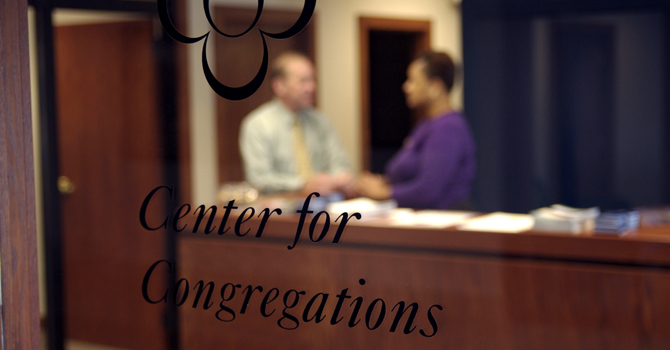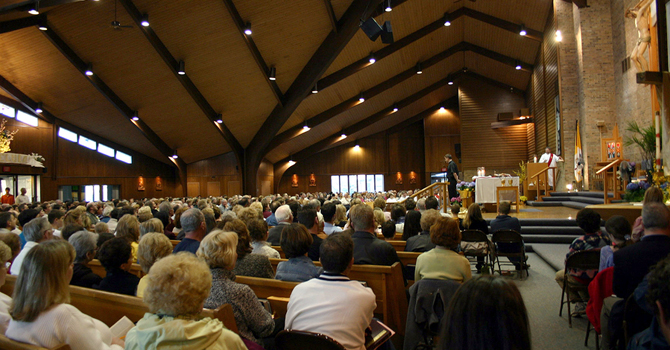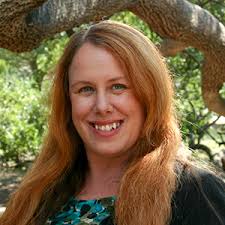For 17 years, the Center for Congregations has helped Indiana congregations by matching them with the resources they need to meet a challenge or explore a new area of ministry.
Now the center has revised and relaunched the Congregational Resource Guide (CRG) to make its model of “resource consulting” available free of charge to congregations anywhere.
 In this interview, the Rev. Dr. Timothy Shapiro explains the work of the center and how it translates on the Web. The following is an edited transcript.
In this interview, the Rev. Dr. Timothy Shapiro explains the work of the center and how it translates on the Web. The following is an edited transcript.
Q: Explain what “resource consulting” is.
The phrase “resource consulting” is a term we use internally to describe our work. Most of the congregational leaders we work with don’t think of the conversations as a consultation.
Resource consulting is a series of conversations in which a congregation describes an opportunity or challenge they seek to address, and the center listens, assesses and helps the congregation find and use resources that advance the congregation’s learning and capacity.
Our work is based on a particular theory of how adults in community learn to do new things. It is an adult learning model, developmental in nature. We intend to place agency where it should be -- with the congregation.
So we listen. We ask lots of questions. We encourage clergy and laity to inquire together. We often find that slowing down, rather than creating anxious urgency, creates space for new learning.
Resource consulting is about working with a helper -- someone listening to a congregational leader talk about a challenge or opportunity and then linking that leader with a resource that is going to help them effectively address that which they’re most concerned about at the moment.
We consider a resource to be any kind of helper outside the congregation. So it could be a book; it could be a workshop; it could be a website; it could be a DVD; it could be a video on YouTube; it could be a seminary professor.
The mix between their own creativity and the knowledge and expertise of the resource helps the congregation more frequently, with fewer roadblocks, address that which they set out to do.
Q: Does your organization then step away?
We step aside in the sense that we’re not going to be the direct intervention, but we do stay in relationship with them. Indeed, there are many congregations in Indiana that we’ve had repeated resource consultations with.
We continue to walk alongside the congregation and find out how it is doing, what they’ve learned, what new issue may have developed in the process of addressing what they first called us about.
Q: What have you learned about the capacities that are needed by an institution to use this model effectively?
One thing we try to do is to match the congregation’s capacity with the resource that we’re recommending. It’s helpful for a congregation to reach greater awareness of where they are in relationship to the challenge that they face.
One way to answer your question would be that a congregation doesn’t need a lot more than to be who God is calling it to be and to nurture some sense of awareness of where it stands in relationship to what it’s trying to do.
There isn’t a simple or single formula about a congregation needing to have a certain kind of capacity or gift to be able to make good use of resources. A congregation can always learn something, regardless of its present capacity.
Q: So your job is not to say, “You have to have XYZ at the start,” but rather to help discern their capacities?
Right. And it’s always in relationship to what they’re calling about. For instance, a congregation could have really gifted people and have wonderful experiences related to worship, but when it comes to some aspect of, say, community ministry, it may be a large learning curve for them. But that’s OK.
A congregation at any given moment doesn’t have some static ranking or capacity. It’s always in relationship to the current moment and the current challenge that they’re trying to face.
Q: How does the use of this model affect the mission of that organization?
I’m going to answer it first for the center. How does our approach to working with congregations affect our mission? There are many wonderful helpers out there for congregations, and there’s an abundance of interventions and tools and techniques that can help a congregation live into the kind of future that it’s discerned it wants to live.
This mode of resourcing with congregations is simply one way.
For us to be good at what we do, it’s important for us to remember that we’re not the experts. We don’t have the wisdom that the congregation has. We’re simply a conduit for the congregation to think about their challenge in a new, more expansive way through engagement with another helper.
In terms of what we do then having an effect on the congregation’s mission, this methodology of resourcing or resource consulting helps the congregation gain greater clarity about its overall mission and greater clarity about the specific expression of that mission that they’re calling about.
Q: You’ve launched a new version of the Congregational Resource Guide, which was once a project of the Alban Institute, and are making it more broadly available. What is the CRG?
After 17 years of resourcing Indiana congregations, we have data that shows that resourcing congregations from an adult learning model does help congregations to effectively do new things. We would like this form of resourcing to be available to congregations outside Indiana.
When the center had the opportunity to revise the Congregational Resource Guide into its present expression, we wanted to create a Web application that mirrored the experience the Indiana congregations have of calling the Center for Congregations.
So you can go to the Congregational Resource Guide as it has been newly released and be able to type in what their current congregational challenge is. They might say, for example, “We are a congregation seeking to improve our community ministry.”
The CRG currently has over 1,000 vetted, curated resources on the site around any number of issues related to congregations. Indeed, if you were to type in the phrase “community ministry,” you would find several kinds of resources that have been recommended to congregations and found useful.
The resources may be books, organizations, people that could be helpful to congregations. There’s a complete annotation that describes in what context the resource might be available or might be helpful.
When we were in the conceptual phase of designing the new CRG, one thing we learned is that our search results had to be more reliable, more precise and more informative than what pastors would get if they put the same term or phrase or word into Bing or into Google.
Just this morning we were testing our search results against Google and Bing searches, and we were pleased that if you typed in “church conflict,” you would get 12 really well-vetted and annotated resources showing up on the front page.
We believe our added value is that we’ve vetted these resources, we have feedback about the use of these resources, we’ve annotated the resources -- not just describing the resource but detailing in what settings it could be used and how it could be used.
We’ve also developed an experimental part of the CRG called Workspaces. If you were on a team in your congregation working on community ministry, you could open up a workspace on this application and communicate with your team through this workspace.
You could develop your work plan, what you’ve learned from the resource, communicate with other team members, invite an expert to participate with you in that workspace.
I should also mention that we have peer organizations across the country – the Resource Consulting Network -- that have helped us think about the Congregational Resource Guide, and indeed are using it with their constituents.
That would include groups such as the Samaritan Center for Congregations in Naperville, Illinois; the Capital Region Theological Center in Albany, New York; the Texas Methodist Foundation in Texas; Samford University; the Christian Reformed Church; and Whitworth University.
Q: What have you learned about congregations? What do they find most helpful?
Based on the analytics we have right now, congregational leaders are going to the CRG, they’re typing in what they need or what they’re seeking resources for, they’re finding a list of resources, and they’re lingering long enough on the page that we can tell they’re reading the annotations and then moving on to another search.
That’s what we want.
We want leaders to be there at the keyboard having a successful search and have that search trigger something in their mind that leads them to think “OK, ‘community ministry’… hmm, I’m going to save that resource.
“Now I’m thinking this is going to require a whole new conversation with my board, so I’m going to type in ‘conversation’ or ‘facilitation’ and see what I get.”
We think the early signs are that’s what’s happening, and that’s good.
In addition, if someone is frustrated and not able to find what they want through the CRG, there’s a very easy access for them to initiate an email correspondence or phone call with the center or with one of our peers in the resource consulting network.
We find that they’re using that, and that’s a good way for us to help more congregations and to amplify our services.
Q: How will you know that the CRG is being effective?
Well, there are at least two broad categories of ways we’ll know the CRG is effective. One is like most organizations that use websites: we’ll follow the metrics; we’ll look at the analytics. So one would be the result of a certain number of congregations having access to resourcing that they didn’t have before. That’s under the heading of results.
In terms of impact, in terms of behavior changes for congregations, attitudinal changes, it comes down to our desire that congregations will experience greater effectiveness regarding what they set out to do because they’ve used this Web application.
Of course, the only way we will know that is through direct conversation with users of the site, which is part of our evaluation plan.
Q: Are you continuing to update the resources? How do you choose and vet them?
As of spring 2015, we have 1,000 resources on the website. In the internal database of the Indianapolis Center for Congregations, we have 7,000 resources. Every week, there are resources being added and resources being taken away.
We have several strategies for resource discovery and several values that we apply to our evaluation of every single resource: Has it proved helpful in the past to other congregations in other areas or settings? Is it based on something more than one person’s experience or anecdotal observation? Is it accessible? If someone sees the resource and says, “I’d like to use that,” is it a book that is still published? Is it a person who still functions as a consultant, etc.?
We also look at resources that can be adapted -- it is the resource strong enough to be made even better by a congregation’s ingenuity?
Q: Has this changed the work of the Center for Congregations, the relationship with the folks that you work with directly?
Our work with Indiana congregations remains the same. Hopefully, the CRG Web application improves our ability to serve our primary constituents, which are Indiana congregations.
We also hope that the CRG can be a way for us to deepen our peer relationship with those in the resource consulting network, because we will learn from them, and I hope that there are things that they can continue to learn from us.















